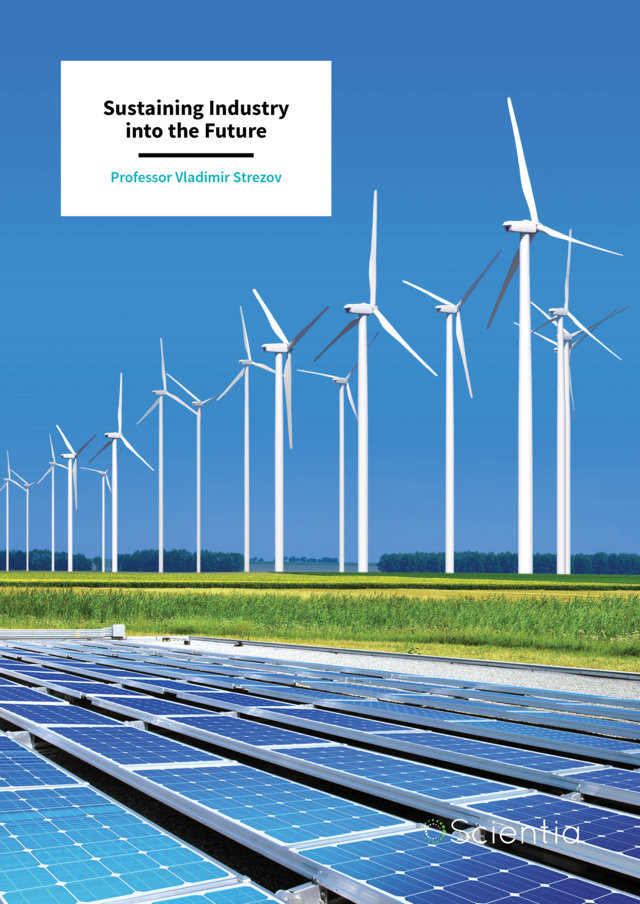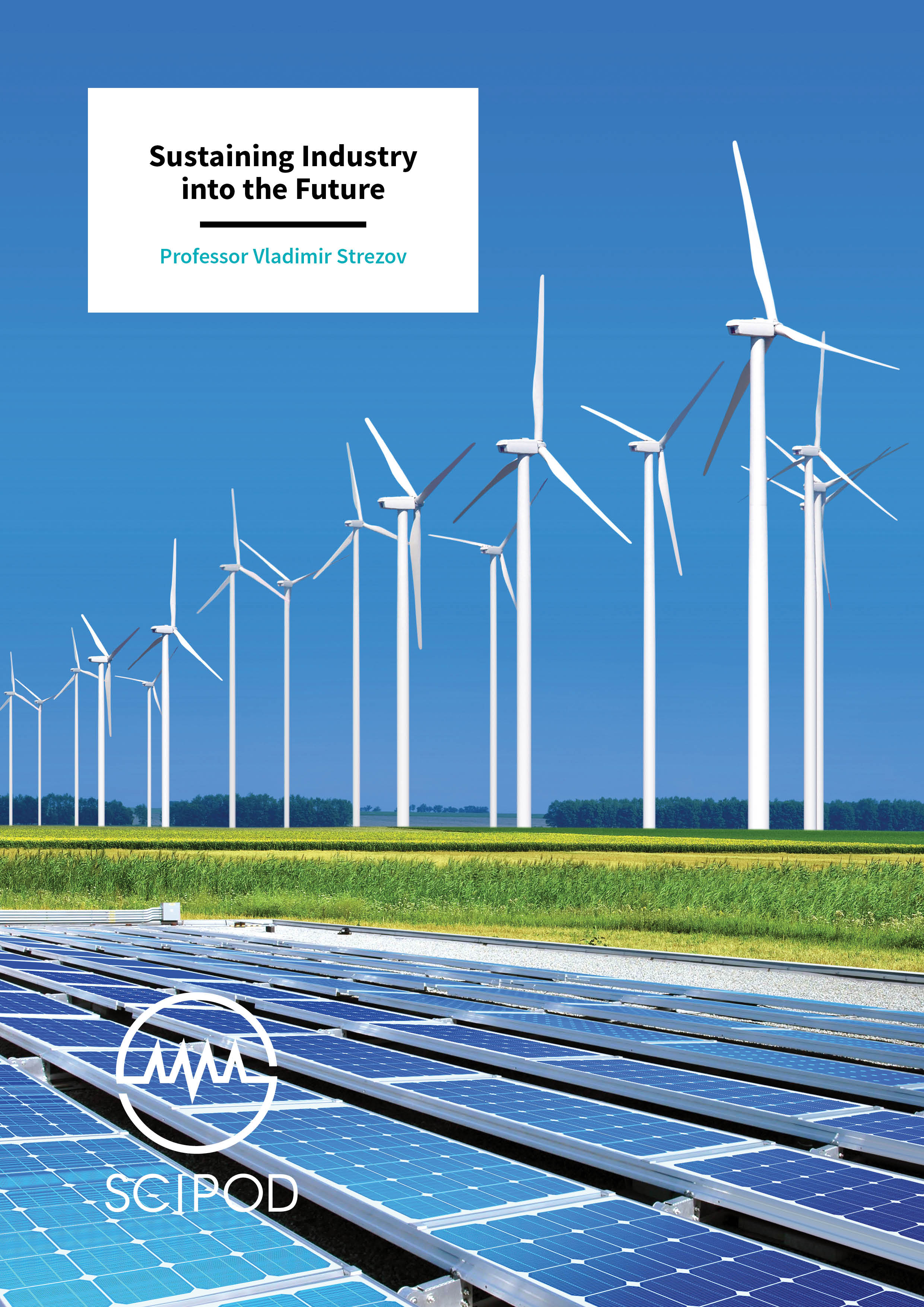Professor Vladimir Strezov – Sustaining Industry into the Future
It is becoming increasingly critical to accurately assess our methods for producing energy, so that we can prosper without continuing to damage our planet’s delicate environment. Professor Vladimir Strezov and his team at Macquarie University are uncovering the realities of industrial processes so that their economic worth and environmental impact can be kept in sustainable balance.
Avoiding a Finite Future
In a developed society, energy use is the means through which we engage with technology in any process or activity, and is proportionate to gross domestic product itself. The fundamental issue with this is that the forms of energy generation that we currently use cannot sustain us into the future of development that rates of growth indicate. 41% of electricity generation is powered by fossil fuels – resources of a finite quantity on Earth that cannot be renewed.
Professor Vladimir Strezov of Macquarie University, Australia, has been investigating multiple approaches to industrial processes that can be sustained into the future. He and his frequent collaborators, Annette Evans and Tim J Evans, focus on producing data that can be used to align the needs of industry with the limits on our resources. ‘Our research aims to develop strategies and technologies for reduction of environmental impacts through improved energy efficiency of the industrial processes, reduction in emissions and integration of renewable energy sources,’ Professor Strezov explains.
Our increasing demand for electricity necessitates reduced impacts. The better standards of living that we are enjoying, coupled with continued population growth, comes with impacts on the required level of energy production. Without drastically rethinking our current methods, developing countries will need increasing amounts of fossils fuels, and this will increase greenhouse gas emissions considerably, leading to devastating impacts on our already-damaged climate. Our current dependence on fossil fuels cannot be sustained – a dramatic shift is needed to invest in systems that allow more energy generation from renewable sources.
‘Our research aims to develop strategies and technologies for reduction of environmental impacts through improved energy efficiency of the industrial processes, reduction in emissions and integration of renewable energy sources.’
Prioritising our Longevity
As Professor Strezov has highlighted in his research, humans have until recent history taken the planet’s resources for granted as unlimited. The word ‘sustainable’ was first used in The Limits to Growth by Club of Rome in 1972, which stated that ‘we are searching for a model that represents a world system that is: 1. sustainable without sudden and uncontrolled collapse; and 2. capable of satisfying the basic material requirements of all its people’. The United Nations Conference on the Human Environment in 1972 resulted in the Stockholm Declaration and the UN Environment Programme. Sustainability is about prioritising the future as highly as the present, and has economic, social and environmental dimensions.
In the last few decades, it has been established empirically that there is a need to be economical about our growing consumption. Professor Strezov highlights that our current rates of consumption indicate limited time left for fossil fuels – coal will run out in about 109 years, oil in 53 and gas in 54. The Earth’s resources of coal, oil, natural gas, uranium and minerals need to be preserved as part of the resource component of sustainability.

Over time, the principles and metrics by which sustainability is measured have become more sophisticated. The 1980 World Conservation Strategy: Living Resource Conservation for Sustainable Development stated that ‘human beings, in their quest for economic development and enjoyment of the riches of nature, must come to terms with the reality of resource limitation and the carrying capacities of ecosystems, and must take account of the needs of future generations.’ Of the principles of the Stockholm Convention, some included ‘non-renewable resources must be shared and not exhausted’ and ‘pollution must not exceed the environment’s capacity to clean itself’. Current environmental criteria for industrial sustainability include consumption, greenhouse gas emissions, emissions to air, emissions to water and waste.
Quantifying Sustainable Development
The need for change is becoming more widely accepted. There is high demand for change in the ways that we power our societies – for example, 70% of Australians wish for coal use to cease in favour of other energy sources.
There is, however, a lack of consensus on the best methods to increase sustainability of industrial processes. A wide range of different sustainability indices have emerged, including the Change in Wealth Index, Ecological Footprint, Environmental Performance Index, Environmental Sustainability Index, Genuine Savings Index, Global Well-Being Index, Happy Planet Index, Human Development Index and Sustainable Society Index.
There is no index with a consensus that is both political and scientific. Professor Strezov has noted that one limitation is that no single indicator can give an exhaustive view of sustainable development. There has been a call from scientists and policymakers to better integrate to develop sustainable development indicators so that their different purposes are being adequately addressed. Sustainability assessments based on industrial activity are possible through the use of pollutant inventories, but these inventories are still in need of being consolidated and standardised.
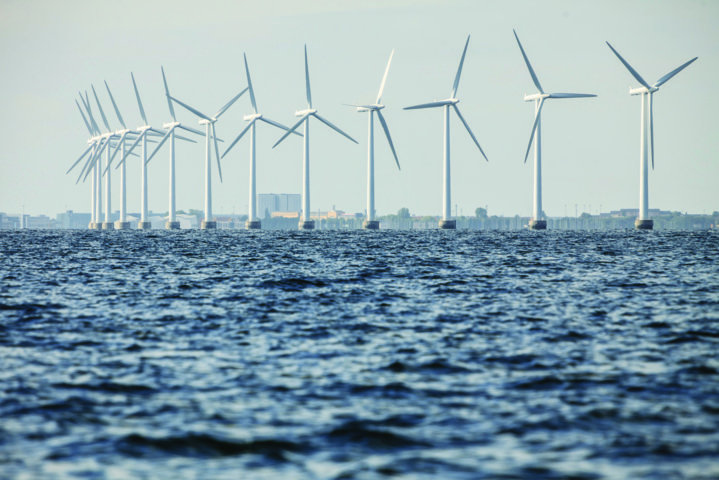
Forms of Energy and their Worth
Professor Strezov and his colleagues have investigated the feasibility of sustaining multiple energy sources. Forms of energy generation that are alternatives to fossil fuels include hydropower, wind energy, geothermal energy, natural gas, biomass combustion and gasification, solar power and tidal power.
In an analysis by Professor Strezov and his team, biomass technologies indicated high levels of efficiency that compare with the best coal and wind technology. They point out that biomass energy crops, however, have the most limitations in that they require agricultural land, making them the form of energy that requires the most land. Use of biomass residues (typically by-products of forestry or agriculture) are generally more sustainable than biomass-dedicated energy crops. Additionally, biomass demands resources that might otherwise be used for heating and cooking, which can impact economically disadvantaged areas.
Professor Strezov and his colleagues have also assessed the sustainability of other energy sources. Coal, gas and geothermal electricity, in that order, produce the highest greenhouse gas emissions. Wind powered and hydroelectric energy are the most sustainable energy sources. While more expensive than coal, nuclear, gas and hydro, Professor Strezov’s investigations highlight that biomass dedicated energy crops are still cheaper than wind and geothermal energy. Photovoltaic technology is by far the most expensive energy source, and has the lowest electrical efficiency. However, it has the advantage of solar energy being highly abundant as a power source.
The Value and Cost of Minerals
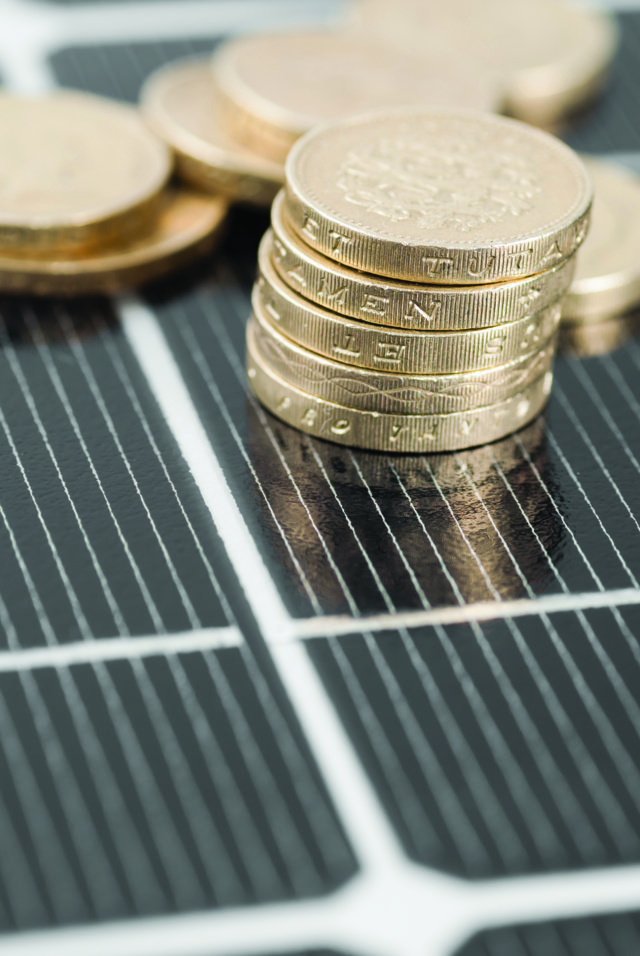
Professor Strezov, along with Dr Tim Evans, has also investigated the degree to which various mineral processing industries could be integrated into a sustainable society. They used the Australian iron, steel, aluminium, lead, zinc, copper and gold industries as case studies. During their assessment, the duo employed environmental parameters including consumption, greenhouse gas emissions, harmful atmospheric emissions, metals, organic air toxins and non-recyclable waste produced during metal production. The minerals were assessed according to the risk they pose to the environment along with their ultimate economic contributions.
The team found that lead and nickel were the most problematic materials for the purposes of sustainable development. Lead involves the emission of harmful volatiles, toxicity and high ore depletion rates, while nickel causes a high level of toxic waste while contributing relatively little to the economy. The aluminium industry was found to be the worst in terms of greenhouse gas emissions and water consumption. While the iron and steel industries were assessed as being the most sustainable, they create the most organic air toxins, which pose great environmental risk.
Steelmaking: Maintaining a Crucial Industry
Professor Strezov and his colleagues have worked to establish the sustainability of three forms of steel production – blast furnace, electric arc furnace and direct reduced iron. The research team employed parameters of economics, greenhouse gas emissions, freshwater consumption, land use requirements and air pollution. They found that blast furnace based processes were 3 to 3.5 times less sustainable than electric arc furnace and direct reduced iron technologies. Electric arc furnace steelmaking was found to be slightly more sustainable than the direct reduced iron method – largely due to electric arc furnace technology making use of scrap steel (although scrap steel not being abundant is a constraint).
Professor Strezov and his colleagues also established that the main advantage of direct reduced iron steelmaking was its use of natural gas and the highly controllable emissions of the method. Overall, they also found that iron and steelmaking technology is less sustainable than food production from wheat, but more sustainable than producing electricity from coal.
A Renewed Path
Professor Strezov and his colleagues have found that renewable energy sources have a number of other distinct advantages over fossil fuels. Their more abundant nature makes them less sensitive to price fluctuations, making them a more consistently logical investment. Additionally, they don’t have the transportation issues of legality and safety that are associated with uranium, gas and coal. The research team highlights that another advantage of renewable resources is that regions with less mineral resources are offered improved energy security.
Part of the reason that coal and gas have remained in general use is that they are reliable and inexpensive. This places them in the position of being intimately integrated with economic processes. For this reason, an abrupt abandonment of these energy sources without a transition to renewables being facilitated is not practical. Professor Strezov and his colleagues note that renewable energy resources must first be incentivised and encouraged.
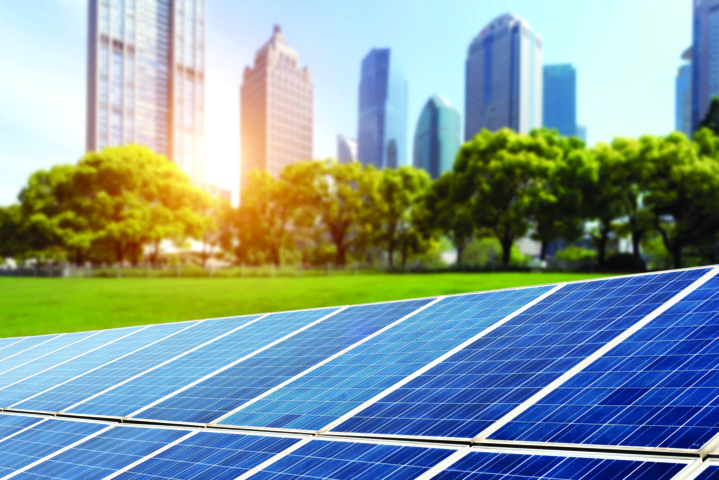
Consolidating Sustainability
The next steps of research for Professor Strezov’s team will involve understanding the mechanisms behind how dioxins form – some of the most toxic chemicals ever produced by humans – during iron ore processing and their reduction and better control. The team will also monitor the chemistry and concentration of atmospheric particles in Chinese urban centres near iron and steelmaking plants. The production of biofuels from underutilised organic wastes will be a further focus of their research, specifically through the use of thermal processing methods such as pyrolysis.
Through providing better understandings of the costs of energy-related processes, Professor Strezov and his team aim to help ensure the sustained progress of our human civilisation.
Meet the researcher

Professor Vladimir Strezov
Department of Environmental Sciences
Macquarie University
New South Wales
Australia
Professor Vladimir Strezov’s research is in the area of industrial ecology, focusing on the role of industrial processes in sustainable development. He earned his PhD in Chemical Engineering from the University of Newcastle, Australia in 2000. Since 2015, he has been a professor in the Department of Environmental Sciences at Macquarie University in Sydney, Australia. Professor Strezov is advisory board member for the Australian Renewable Energy Agency (ARENA) and Fellow of the Institution of Engineers Australia. He has written over 200 publications and two books: Biomass Processing Technologies with TJ Evans (2014) and Antibiotics and Antibiotics Resistance Genes in Soils with MZ Hashmi and A Varma (2017).
CONTACT
E: vladimir.strezov@mq.edu.au
T: (+61) 2 9850 6959
W: https://web.science.mq.edu.au/directory/listing/person.htm?id=vstrezov
KEY COLLABORATORS
Dr Annette Evans, Department of Environmental Sciences, Macquarie University
Dr Tim J Evans, Hamersley Iron, Rio Tinto
FUNDING
Australian Research Council.
REFERENCES
A Evans, TJ Evans and V Strezov, Assessment of the Economic, Social and Environmental Dimensions of the Indicators for Sustainable Development, Sustainable Development 2017, 25, 242–253.
A Evans, TJ Evans and V Strezov, Sustainability Concepts of Energy Generation Technologies, MA Abraham (ed.), Encyclopedia of Sustainable Technologies, Elsevier, 2017, 3–10.
A Evans, TJ Evans and V Strezov, Defining sustainability indicators of iron and steel production, Journal of Cleaner Production, 2013, 51, 66–70.
TJ Evans and V Strezov, Assessment of Sustainability of Mineral Processing Industries, S Devasahayam, K Dowling and MK Mahapatra (eds.), Sustainability in the Mineral and Energy Sectors, Taylor & Francis, 2017, 15–26.


